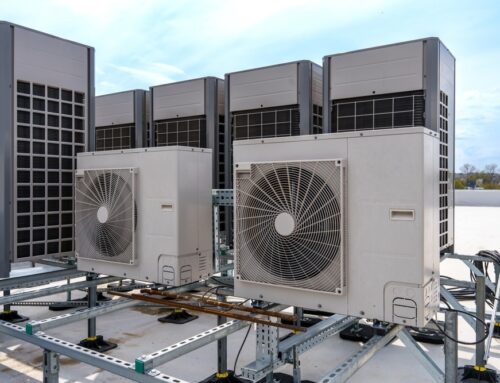Long ago, air conditioning was seen as a luxury. However, today it is a necessary part of American households that enables homeowners to have a comfortable home environment throughout all the seasons of the year. When it comes to air conditioning, the two major systems used in households today include central air conditioning and ductless mini-split systems. This blog will go over how each system works, installation considerations, and the pros and cons of each.
Central Air Conditioning Systems
Central air conditioning systems operate as part of a home’s heating ventilation air conditioning system. A great majority of homes are constructed with a central HVAC system; however, there are many older homes that are not equipped with it. Homes with an existing duct system used for heating are great candidates for adding central air conditioning to their home. Homes that are not equipped with it are certainly able to add central air; however, it’ll require more work and construction.
How Central HVAC Systems Work
Central HVAC Systems consists of these two types:
- Split Systems – consists of two primary components, one mounted inside the house while the other being mounted outside. The outside unit comprises of either an air conditioner or heat pump (with the compressor and condenser equipment inside), while the indoor unit contains an electric or gas furnace for heating. You will need some space for the indoor unit, like an attic, basement, or utility closet.
- Packaged System – this system combines both air conditioning and furnace into a single outdoor unit. This is a flexible option for small homes that don’t have space for an indoor unit.
Both of these systems require ductwork to circulate the air through the entire home. They’re both controlled by centrally located thermostats.
Installation Considerations for Central Air Conditioning Systems
An important consideration for central air conditioning systems is that you’ll need ductwork. Ductwork is the system of metal or fiberglass tubes that run through a home. If you don’t have one, don’t worry! As long as you have the space for it, you can get ductwork installed. The process will just be more time-consuming and cost you more money.
Pros of Central Air Conditioning
- Invisible Equipment – Do to the ductwork being behind the wall, this system is not visible. You won’t have to worry about it affecting the look of your home.
Cons of Central Air Conditioning
- Indoor Air Quality – Ducts can trap dirt and dust, which can cause allergies and other problems. To avoid this, you will need to clean your ducts regularly.
- Less individualized Temperature Control – Due to the AC system being centrally controlled, you cannot individualize the temperature for each room.
Ductless Mini-Split Systems
Ductless mini-split systems comprise of two components: an external compressor (mounted outside of your house) and indoor units located in each room. The indoor units can be controlled separately, so each room has individualized temperature control.
How Ductless Mini-Split Systems Work
Both central air conditioning and ductless mini-split systems operate using the same science. However, the energy loss that takes place within ducts, doesn’t happen with mini-splits. They are more energy-efficient than central systems
Installation Considerations for Ductless Mini-Split Systems
If you don’t have ductwork, don’t worry! Ductless mini-split systems don’t need ducts, hence their name. All you need is space to locate the outdoor unit (within 50ft of the indoor units) and wall space for the interior units.
Pros of Ductless Mini-Split Systems
- Installation Flexibility – Since these systems don’t rely on ductwork, they offer more flexibility.
- Energy Efficiency – The ability to operate the temperature individually in each room allows for a more energy-efficient experience.
Cons of Ductless Mini-Split Systems
- Home Size Limitations – You can’t do mini-splits for larger houses, like a two-story home.
- Visible Indoor Units – the indoor units are visible since they are mounted on the wall.
Both central air conditioning and ductless mini-split systems are effective methods for cooling your home. Deciding on the right one will depend on your home’s existing configuration and size, plus personal considerations like the aesthetics of your home’s interior and the desire for individualized control. We hope this blog helped you get an idea of which one is right for your home. If you decided on one and are ready to purchase and install one in your home, give us a call at (877) 452-8527 or click here for a free consultation.




